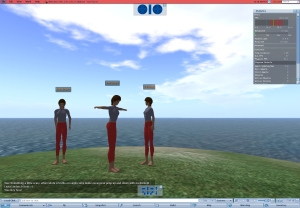Bohmte, a town in Germany, has abolished road signs in an effort to reduce accidents. Sounds a bit like a wiki-style approach to sharing the road, don't you think? Quoting the Bohmte mayor, ABC news reports:
"In the city center, all conventional traffic signals have been taken out and the traffic is no longer regulated by traffic signs - people do the regulating themselves. And that is the whole idea, namely that the road users, pedestrians and motorists alike, should take each other into account and return to their everyday good manners."
In the SMH, they report that the initiative has reduced the accidents and it also saves money by removing the cost of maintaining road signs and traffic signals. This approach to "negotiated behaviour" in the urban environment - termed Shared Spaces - was championed by Dutch road traffic engineer, Hans Monderman, who unfortunately passed away at the beginning of this year.
I generally shy away from calling everything "2.0", but there are obvious parallels between wikis and the Shared Spaces concept, but clearly they have evolved quite separately. There some food for thought for those of looking at Enterprise 2.0 in this much earlier article about Monderman in Wired:
"The common thread in the new approach to traffic engineering is a recognition that the way you build a road affects far more than the movement of vehicles. It determines how drivers behave on it, whether pedestrians feel safe to walk alongside it, what kinds of businesses and housing spring up along it."
I would say the same applies to IT and I wonder if we can interpret these Shared Spaces patterns in an enterprise context?
- Remove signs: The architecture of the road - not signs and signals - dictates traffic flow.
- Install art: The height of the fountain indicates how congested the intersection is.
- Share the spotlight: Lights illuminate not only the roadbed, but also the pedestrian areas.
- Do it in the road: Cafes extend to the edge of the street, further emphasizing the idea of shared space.
- See eye to eye: Right-of-way is negotiated by human interaction, rather than commonly ignored signs.
- Eliminate curbs: Instead of a raised curb, sidewalks are denoted by texture and color.
What do you think?
